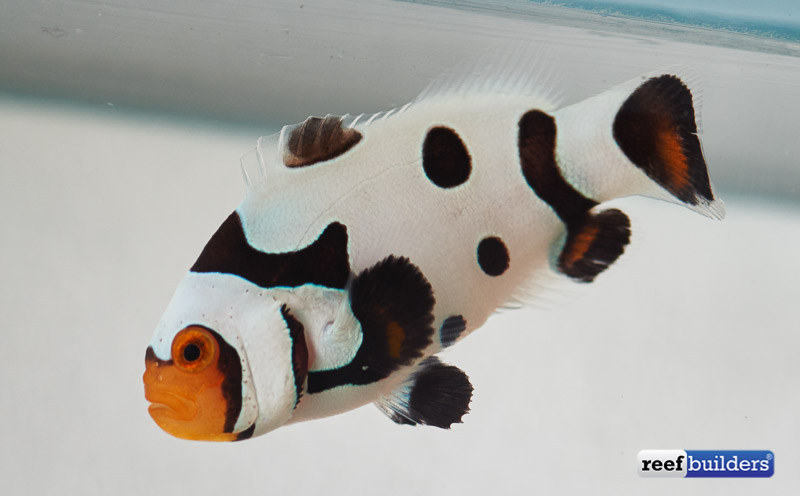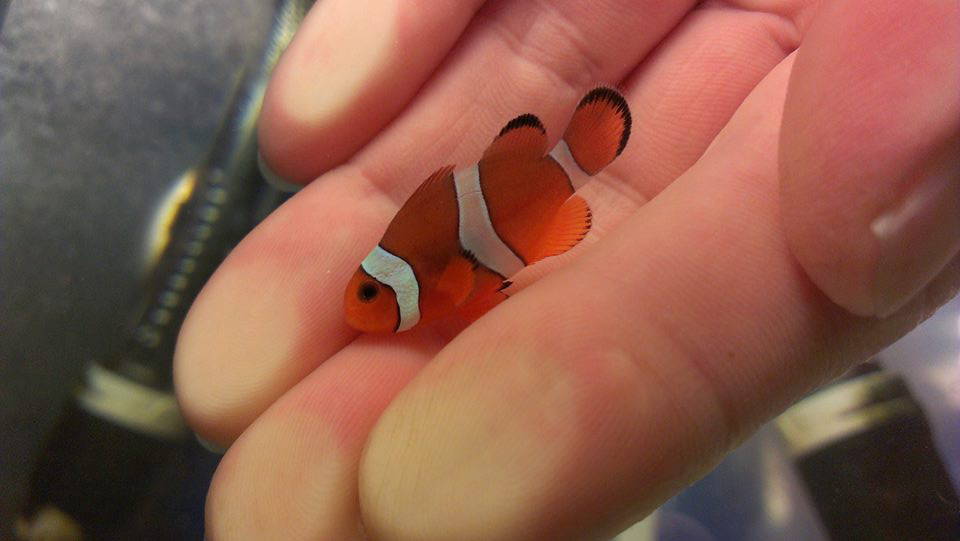If you’ve been shopping for new clownfish lately you may have noticed their small size. Due to global economic factors, the hobby’s biggest selling fish – the tank-bred Common Clownfish – is being sold in smaller and smaller sizes, and that brings its own problems with it.
Tank-bred clowns are the most sought-after saltwater fish by beginners. They’re also the most recommended to beginners and for the last twenty years or so there’s been good reason for that. Captive-raised Common clownfish are easy to keep, hardy, and have zero impact on the oceans. They take dry foods, don’t need large aquaria and they are invertebrate safe. The same goes for the Percula Clownfish, Amphiprion percula. New hobbyists are told they can have Nemo, and they’re actually the most suitable saltwater fish in the store, until now.
Clowns used to be sold at a size of around 2” total length. At this size they were perfect, they hadn’t sexed out yet and weren’t showing the aggression that adults show. Stores could still keep dozens of them in the same tank and the Clownfish world was a happy place.
Now though, due to the rising costs of just about everything, tank-bred clownfish are available in sizes as small as 1” total length, and at just one inch long a clownfish is a totally different animal.
At one inch long a post-metamorphosis Clownfish would usually have the full protection of an anemone, (and adults,) in the wild or would still be in the hatchery in captivity. When housed in the average reef tank juvenile clowns struggle with high flow rates, alien foods, aggression from other fish, and a lack of protection. Worse still if they’re added to another solitary clown because their small size means they’re a “guaranteed male,” they can suffer the extreme stress of aggression from the resident, much larger clownfish within seconds of being added, and this can exacerbate the jumping behavior we all know too well.

Frequent feeding required
The average reef aquarium is fed once per day, maybe twice, but a juvenile clownfish should be fed more times than that just to maintain weight, and on a diet made up of the correct ratios of protein and fat. They may never have been offered dry foods like flake, never surface fed before, and need to be weaned off their larval and post-larval diets. You need a nursery tank for baby clownfish, not a rimless mixed reef. You need to feed them up, raise them and nurture them until they’re big enough and strong enough to fight for food and territory in your main display, and not get sucked into the pump or through the weir comb.
So still choose tank-bred clownfish, in any designer flavor you desire, but stick to plump, healthy 2” fish, avoid shortened-bodied individuals, and avoid small, thin fish with see-through, insipid color patterns. Pay a bit more for a larger, easier-to-keep pet and it will pay dividends in the long run.



